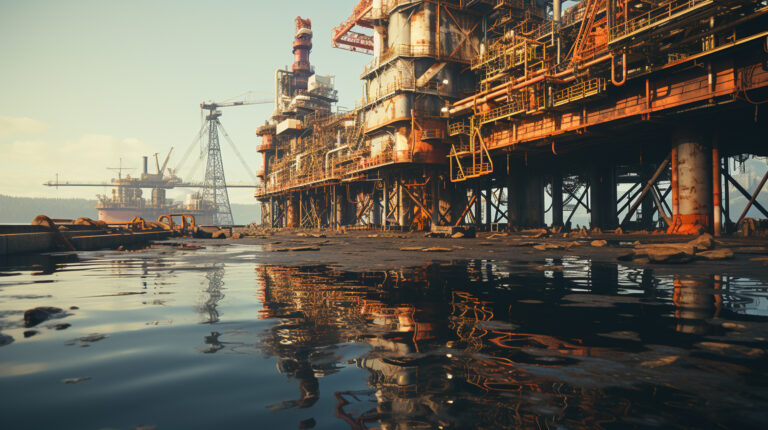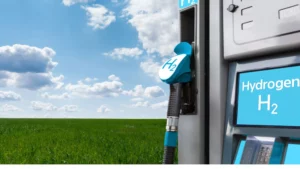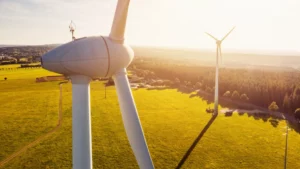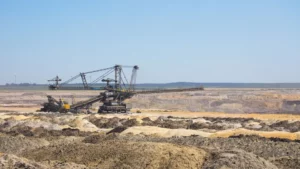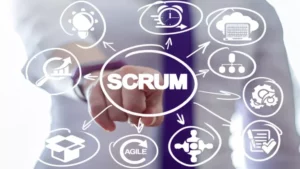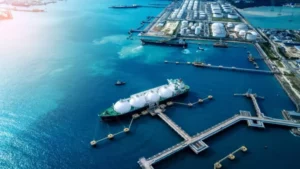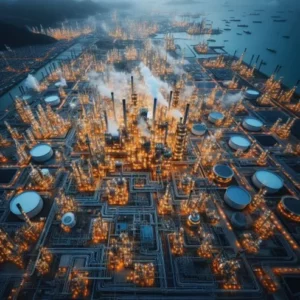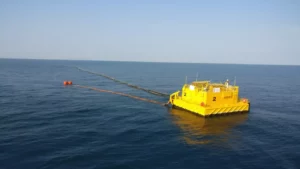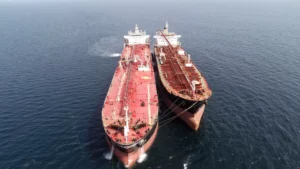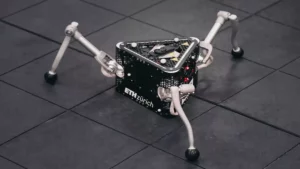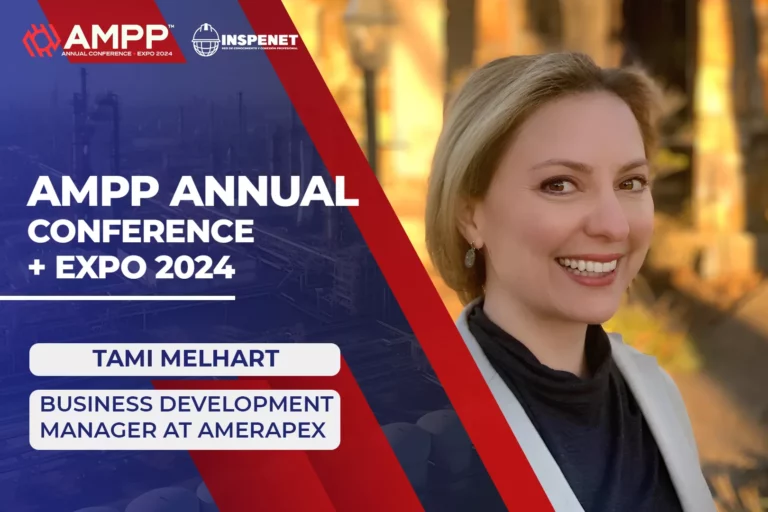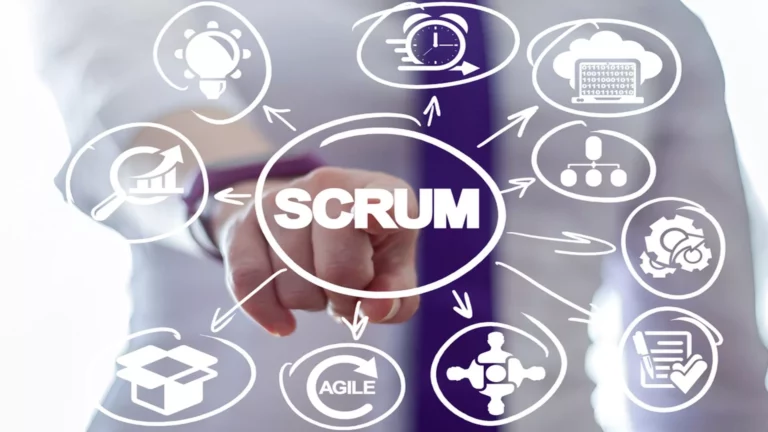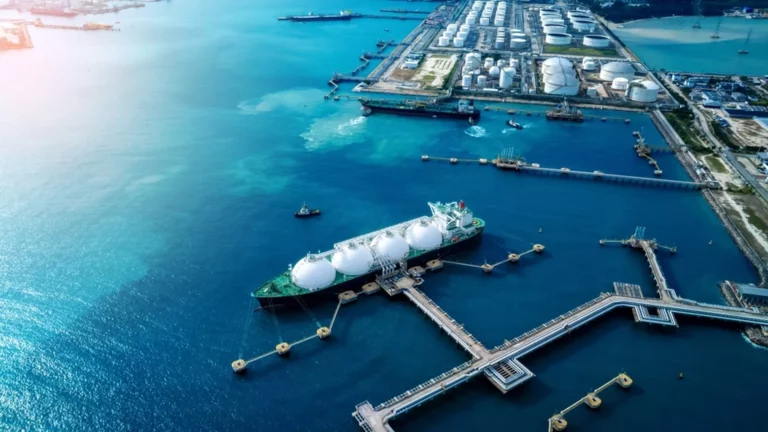Author: Ing. Mayuly Rodríguez, October 15, 2023.
Introduction
The structural integrity of maritime constructions guarantees safety, operational efficiency and environmental sustainability. Corrosion of maritime structures is a natural electrochemical phenomenon that deteriorates metallic materials and intensifies under certain environmental conditions.
The direct influence of varied and complex factors, the accelerated degradation of metallic materials in these environments is magnified, urging the implementation of advanced control and mitigation measures. The severity of the marine environment, marked by salinity, pressure, temperature and other factors, generates a dynamic response in engineering and technology to preserve the integrity of these structures.
Influential critical environmental factors
The degradation of steel structures induced by corrosion in marine environment It depends largely on the surrounding environmental conditions that modulate the intensity, speed and nature of the degradation processes, which represent a persistent threat to the integrity, functionality and durability of marine assets. Identifying and understanding them is essential to developing effective mitigation strategies.
The following details how each of these environmental factors contributes to corrosion and how their effects can be mitigated to preserve the integrity of maritime structures :
- Salinity: The concentration of salts in seawater contributes to corrosion. The higher the salinity of the water, the faster the chloride ions pass through the protective film. The formation of local electrochemical cells intensifies, triggering the deterioration of structural materials.
- Temperature: When these are high, they accelerate electrochemical reactions, intensifying corrosive processes. In tropical and equatorial climates, where seawater temperatures are high, corrosion rates have been observed to be significantly high.
- Oxygen and humidity: The combination of both increases the rate of corrosion, especially in ferrous metals. Oxygen facilitates the oxidation process, while the humid environment acts as a conductive medium for the electrochemical currents responsible for the deterioration of the protective coatings and generating surface deterioration and pitting.
- Biofouling: Affects cathodic protection systems; in some cases, it is a direct contributing factor to microbiological corrosion.
- Pressure and depth: The increase in pressure with depth influences corrosive reactions, and affects the effectiveness of coatings and protection systems, therefore at greater depths, more robust protection systems are needed.
- Water Movement: Currents, tides and waves cause erosion of protective coatings and expose underlying metal to erosion.
- Exposure to the atmosphere: The above-water portion of the structure is exposed to varying atmospheric conditions, including air salinity, humidity, and UV exposure. This area wear and deterioration is accelerated in the absence of an adequate protection system.
Main types of corrosion of maritime structures and generating factors
The integrity of maritime structures faces various corrosive processes, mainly caused by specific environmental factors. The main forms of corrosion are presented below along with the specific factors that induce them.
- Galvanic corrosion: This is called one of the most widespread types in these environments. It occurs when two different metals are electrically coupled together in a common electrolyte, during galvanic coupling (e.g. flanged joints), the corrosion of the more anodic metal increases and the corrosion of the more cathodic metal decreases. It occurs due to the potential difference between different metallic materials and the high conductivity of seawater.
- Atmospheric corrosion: Although it focuses on the part of the structures exposed to the air, in marine environments it is accelerated due to the constant presence of salts and humidity in the air.
- Pitting corrosion: It is the most dangerous form and occurs when chlorides are within the droplets formed by salt water that has been trapped in the air. These droplets settle and leave salt residue on the contact surface. This causes a break in the protective film where an anodic area is established. It is especially prevalent in metals such as aluminum and stainless steel and is generated by the presence of chloride ions, oxygen fluctuations, and changes in alkalinity.
- Erosive corrosion: Results from the mechanical action of water movement that erodes the protective layer of the metal surface, exposing it to a corrosive environment. Its main generating factors are the speed and turbulence of the water.
- Microbiological corrosion: Caused by contamination of microorganisms and bacteria such as algae. Aerobic bacteria, including magnesium-oxidizing bacteria and anaerobic bacteria, including sulfate-reducing bacteria, colonize on the metal surface and form biofilms under deposition. Its main factor is the activity of sulfate-reducing bacteria, biofouling and the accumulation of sediments. The bites are a result of the acids and the changed environment of the bacteria.
- Crevice corrosion: This type persists in marine environments, and develops from small volumes of chloride solutions staked in specific areas (for example, sections of threaded pipes). The crack prevents oxygen from keeping the film passive.
- Stress corrosion: It is a process that occurs when mechanical stress and corrosion combine, which can lead to premature failure of the material. In marine environments, materials are exposed to high stresses due to dynamic loading induced by waves, currents and other factors.
Proposals and technologies for corrosion control in marine structures
Science and technology continue to advance with the objective of analyzing and understanding the different corrosion mechanisms to develop methods for its prevention and control according to the required characteristics. Various solutions are mentioned below to address this phenomenon:
- Nanotechnology: The application of this technology in protective coatings is proving to be competent to combat this phenomenon. Incorporating nanocomposite coatings with nanostructured particles increases the corrosion resistance of metals by providing an impenetrable barrier against corrosive agents.
- Self-healing materials: In this area, researchers are exploring self-healing compounds that can automatically “repair” themselves after suffering damage. They are elements that contain microcapsules with compounds that are released in the presence of cracks or wear, restoring the integrity of the material.
- Advanced materials: The increasingly widespread use of specialized alloys and high-performance stainless steels is due to their strong resistance to corrosion.
- Advanced Cathodic Protection: By connecting sacrificial anodes or impressed current systems to marine structures, a protective electrical current is provided that neutralizes the corrosion process. These systems are being optimized for oxygen- and moisture-rich environments. They incorporate real-time monitoring technologies that automatically adjust protection levels in response to fluctuations in the levels of these two variables.
- Robotics and automation: Underwater robots and drones are increasingly used for regular inspections and preventive maintenance on these structures. They access very hard-to-reach areas, collecting data in real time and performing maintenance tasks, such as applying protective coatings, cleaning scale, and replacing small parts.
- Artificial intelligence and monitoring techniques: They have shown considerable potential in prediction and monitoring. Advanced sensors and algorithms analyze real-time data to identify patterns and predict high-risk areas, enabling proactive interventions that mitigate signs of corrosion before it becomes a significant problem.
- Biofouling and microbiological corrosion: To combat these phenomena, intelligent antifouling coatings have been developed that release biocidal agents in a controlled manner to prevent the settlement of marine organisms in the structures. Biological treatments that use useful microorganisms to counteract the corrosive effects of destructive bacteria are also being explored.
All of these initiatives reflect an analogy of scientific and technological disciplines to comprehensively address corrosion in marine structures. Through continuous innovation and the adoption of new technologies, this industrial sector is better positioned than ever to most effectively protect and preserve infrastructure.
Conclusion
It is of utmost importance to understand corrosion mechanisms in marine environments and develop effective strategies to prevent, inspect and control these processes. The objective is to increase the durability of structures and equipment in maritime environments, ensuring the safety, useful life and efficiency of maritime operations.
Consolidation between scientific research, technological innovation and practical implementation is forging a path towards a future where corrosion will be precisely managed, mitigated and ultimately controlled, thereby ensuring the longevity and operational efficiency of marine infrastructure. .
References
Own source



